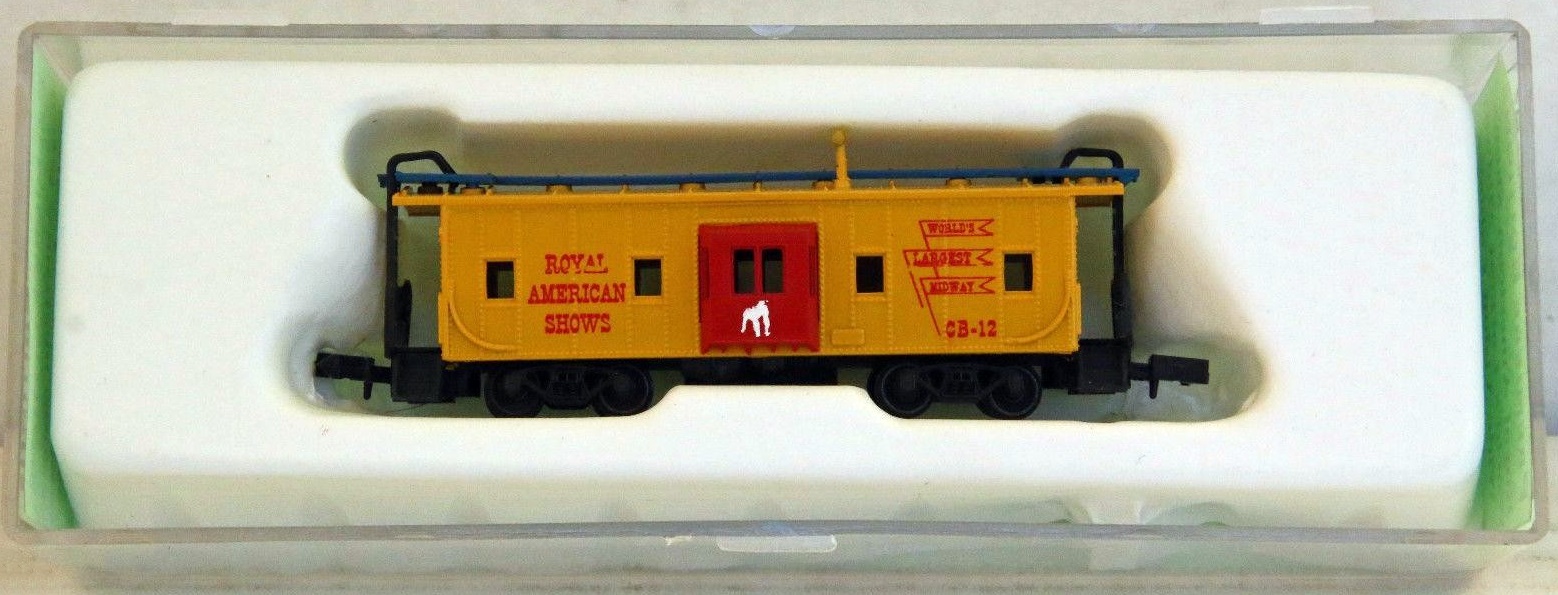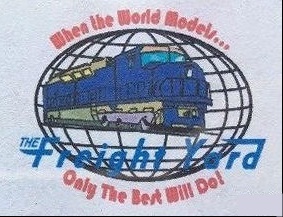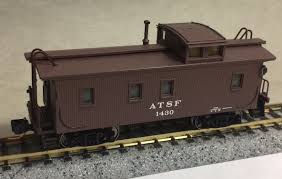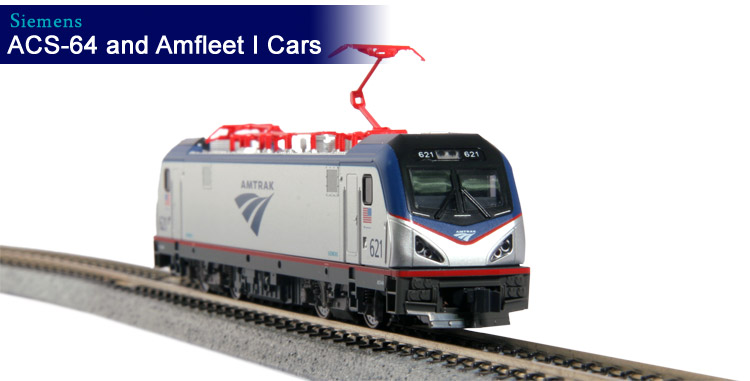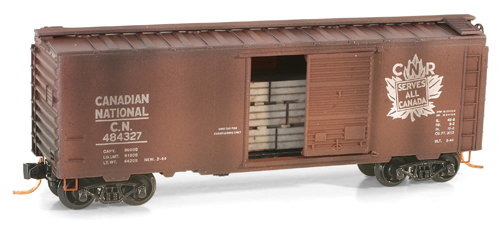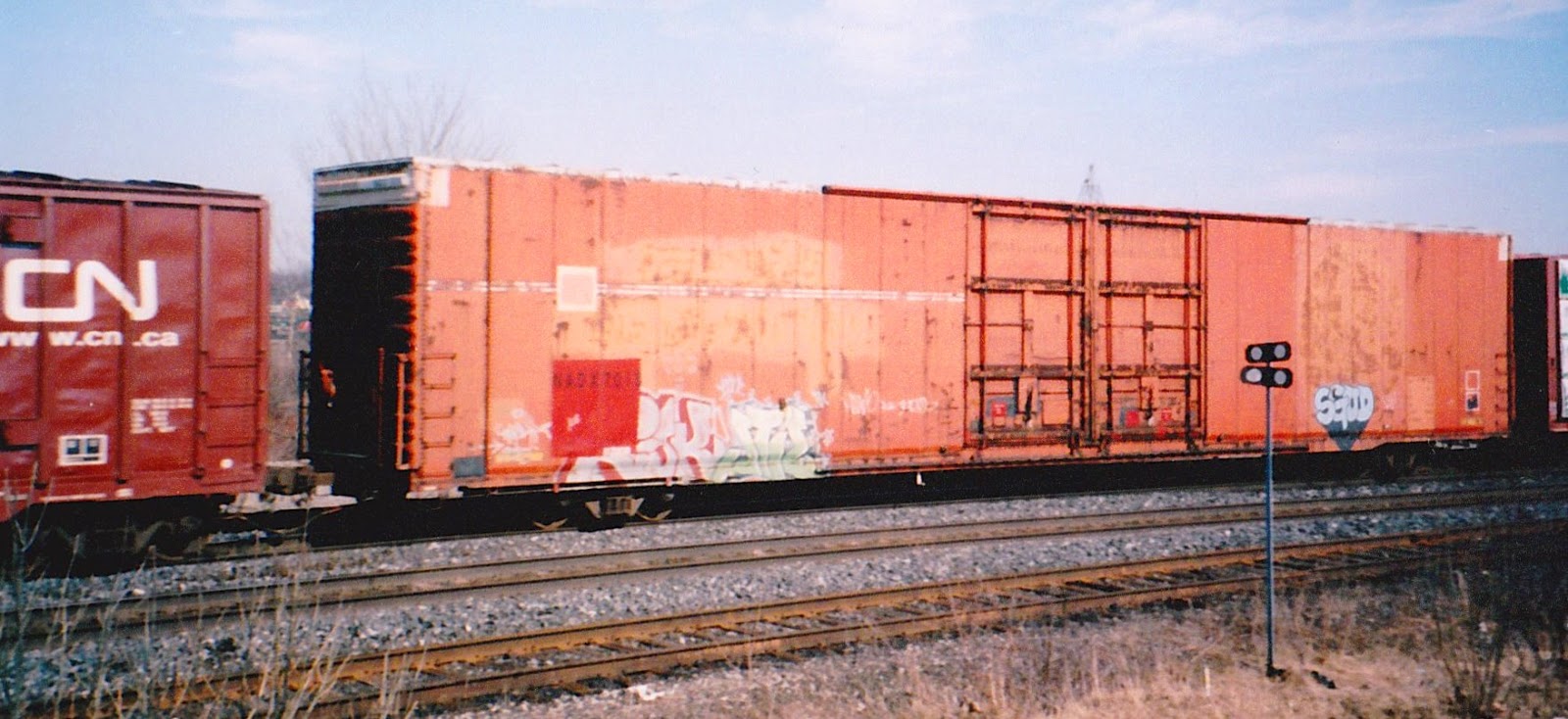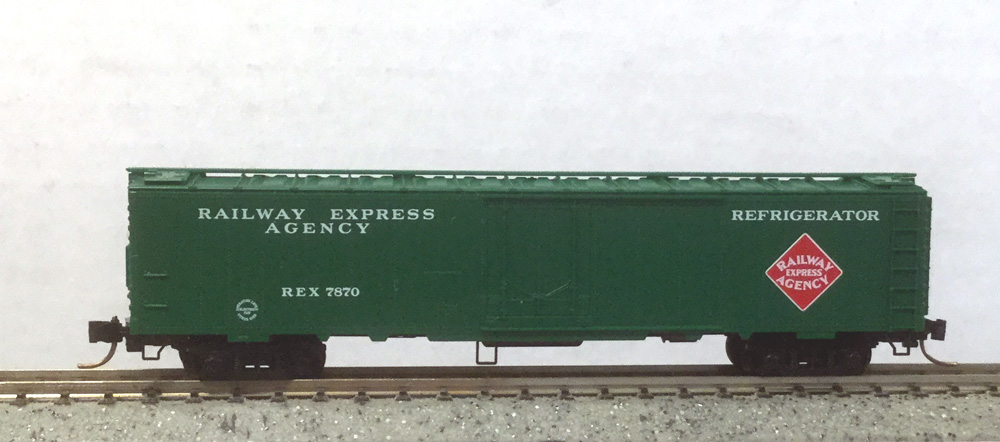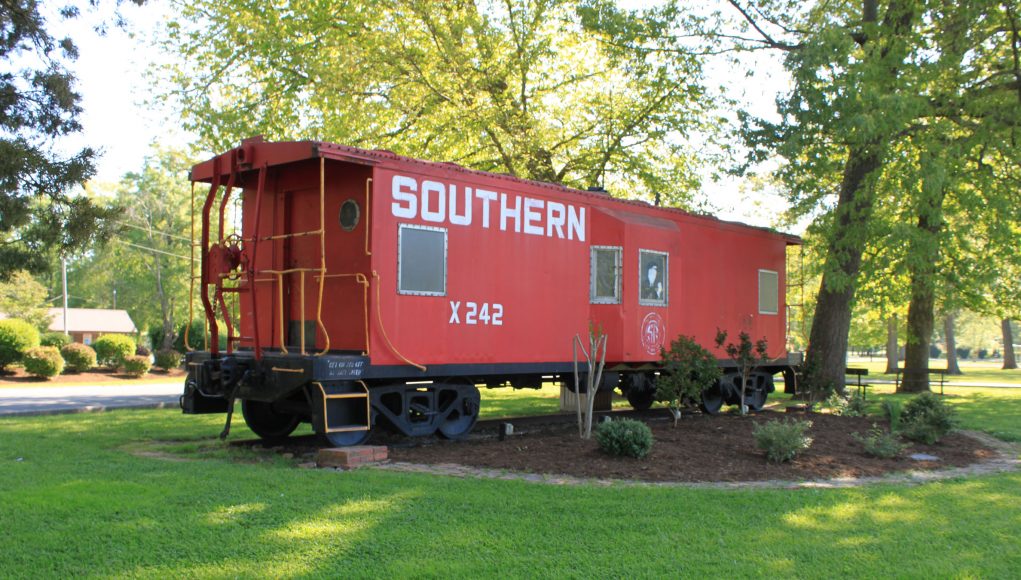The Freight Yard - 9734D - Caboose, Bay Window - Royal American Shows - CB-12
| Stock Number | 9734D |
| Brand | The Freight Yard |
| Manufacturer | Con-Cor |
| Body Style | Con-Cor Caboose Bay Window |
| Prototype Vehicle | Caboose, Bay Window (Details) |
| Road or Company Name | Royal American Shows (Details) |
| Road or Reporting Number | CB-12 |
| Paint Color(s) | Yellow w. Red Bay Window |
| Print Color(s) | White |
| Additional Markings/Slogan | World's Largest Midway |
| Coupler Type | Rapido Hook |
| Coupler Mount | Body-Mount |
| Wheel Type | Injection Molded Plastic |
| Wheel Profile | Standard |
| Series Name | Premiere Editions |
| Release Date | 1997-08-01 |
| Item Category | Rolling Stock (Freight) |
| Model Type | Caboose |
| Model Subtype | Bay Window |
| Model Variety | Window Sides |
| Prototype Region | North America |
| Prototype Era | NA Era II: Late Steam (1901 - 1938) |
| Scale | 1/160 |
Specific Item Information:
Monkey
Model Information:
Originally produced for Con-Cor by Kato in the 1960s, this is one of the original Con-Cor releases. Likely the tooling was moved from Japan to the US facility by Con-Cor in the 1980s, one can expect that the early cars in this series might come from either country. More recently (post-2000) this tooling has been moved to (or re-created in) China.
Prototype History:
In a bay window caboose, the crew monitoring the train sits in the middle of the car in a section of wall that projects from the side of the caboose. The windows set into these extended walls resemble architectural bay windows, so the caboose type is called a bay window caboose. This type afforded a better view of the side of the train and eliminated the falling hazard of the cupola. The bay window gained favor with many railroads because it eliminated the need for additional clearances in tunnels and overpasses. On the west coast, the Milwaukee Road and the Northern Pacifc Railway used these cars, converting over 900 roof top cabooses to bay window cabooses in the late 1930's. Milwaukee Road rib-side window cabooses are preserved at New Libson, Wisconsin, the Illinois Railway Museum, the Mt. Rainer Scenic Railroad, and Cedarburg, Wisconsin.
When the shift was made from wooden to steel caboose construction, a new type of caboose also arrived. The new caboose design replaced the traditional roof-mounted “cupola” with “bay-windows” attached to the sides of the caboose. As freight cars grew taller, the effectiveness of cupolas as practical observation points was diminished. This was especially true on lines that suffered from low clearances and were incapable of making cupolas high enough to see over the top of the tallest freight cars. Cabooses were prone to rough handling, and many a trainman was knocked out of his perch in the cupola and injured when he fell. The new caboose design was safer as well as more effective.
When the shift was made from wooden to steel caboose construction, a new type of caboose also arrived. The new caboose design replaced the traditional roof-mounted “cupola” with “bay-windows” attached to the sides of the caboose. As freight cars grew taller, the effectiveness of cupolas as practical observation points was diminished. This was especially true on lines that suffered from low clearances and were incapable of making cupolas high enough to see over the top of the tallest freight cars. Cabooses were prone to rough handling, and many a trainman was knocked out of his perch in the cupola and injured when he fell. The new caboose design was safer as well as more effective.
Road Name History:
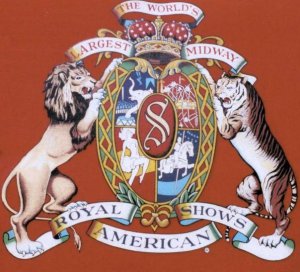 Royal American Shows was founded by Carl J. Sedlmayr, who was born in Nebraska in 1886, Royal American Shows was one of the largest American carnivals throughout most of the twentieth century. Although Royal American's first contract with the Calgary Stampede was in 1934, the company was unable to travel to Canada from 1942 to 1945, during the Second World War, as it relied on a large train (up to 90 rail cars) for transportation. During the war, use of the rail system was restricted by the United States government to the movement of military personnel and equipment.
Royal American Shows was founded by Carl J. Sedlmayr, who was born in Nebraska in 1886, Royal American Shows was one of the largest American carnivals throughout most of the twentieth century. Although Royal American's first contract with the Calgary Stampede was in 1934, the company was unable to travel to Canada from 1942 to 1945, during the Second World War, as it relied on a large train (up to 90 rail cars) for transportation. During the war, use of the rail system was restricted by the United States government to the movement of military personnel and equipment.
In 1967 Royal American Shows was at its pinnacle in terms of size, over 800 people along with livestock and equipment and over 80 railroad cars in 1971. Royal American Shows carried the greatest number of flatcars ever carried by any traveling amusement organization in the world. The show traveled with a full complement of carpenters, canvas men, electricians, painters, full working machine shops with mills, lathes, drills, welders, mechanics, cookhouse, portable showers, and mail department.
Royal American Shows faced the changing economy in the 1970's that would have a huge impact on continuing to stay in business. Towards the end of the 1970's there was a tremendous loss of revenue for Royal American Shows caused by greater distances traveled with ever increasing costs with railroad transportation just to move the show from place to place. In addition, Royal America Shows lost its Canadian route in 1977 during a tax issue causing Royal American to lose all of that revenue on top of mounting expenses.
The carnival equipment seized from the 1975 tax issue at Edmonton and Regina was held in storage until the mid-1990's, at which time the assets were sold at auction and the proceeds were used to pay the outstanding fines. Royal American Shows continued to operate in the United States for the next twenty years, diminishing in size over time; Royal American Show's last spot was in Lubbock, Texas, in October 1997.

In 1967 Royal American Shows was at its pinnacle in terms of size, over 800 people along with livestock and equipment and over 80 railroad cars in 1971. Royal American Shows carried the greatest number of flatcars ever carried by any traveling amusement organization in the world. The show traveled with a full complement of carpenters, canvas men, electricians, painters, full working machine shops with mills, lathes, drills, welders, mechanics, cookhouse, portable showers, and mail department.
Royal American Shows faced the changing economy in the 1970's that would have a huge impact on continuing to stay in business. Towards the end of the 1970's there was a tremendous loss of revenue for Royal American Shows caused by greater distances traveled with ever increasing costs with railroad transportation just to move the show from place to place. In addition, Royal America Shows lost its Canadian route in 1977 during a tax issue causing Royal American to lose all of that revenue on top of mounting expenses.
The carnival equipment seized from the 1975 tax issue at Edmonton and Regina was held in storage until the mid-1990's, at which time the assets were sold at auction and the proceeds were used to pay the outstanding fines. Royal American Shows continued to operate in the United States for the next twenty years, diminishing in size over time; Royal American Show's last spot was in Lubbock, Texas, in October 1997.
Brand/Importer Information:
The Freight Yard was a hobby shop that did custom decoration and special runs of other manufacturers' N Scale products. It sold its custom products under several brands or collections: Premiere Editions, by The Freight Yard and Dreams Design.
It was located in Anaheim, California and then moved to 2006 in Phoenix, Arizona.
Established in the late 1980s, it stopped business under this name by the end of the 2000s.
The Freight Yard was owned and operated by Darren J. Cohen. Darren is now operating North Valley Trains.
The Freight Yard / Premiere Editions runs are usually available in series of two to twelve different numbers (suffixed A to M, with I not used).
The first two digits of the stock number correspond to the release year (9x being 199x, and 2x being 200x).
It was located in Anaheim, California and then moved to 2006 in Phoenix, Arizona.
Established in the late 1980s, it stopped business under this name by the end of the 2000s.
The Freight Yard was owned and operated by Darren J. Cohen. Darren is now operating North Valley Trains.
The Freight Yard / Premiere Editions runs are usually available in series of two to twelve different numbers (suffixed A to M, with I not used).
The first two digits of the stock number correspond to the release year (9x being 199x, and 2x being 200x).
Item created by: Alain LM
on 2022-04-23 13:05:31
If you see errors or missing data in this entry, please feel free to log in and edit it. Anyone with a Gmail account can log in instantly.
If you see errors or missing data in this entry, please feel free to log in and edit it. Anyone with a Gmail account can log in instantly.


